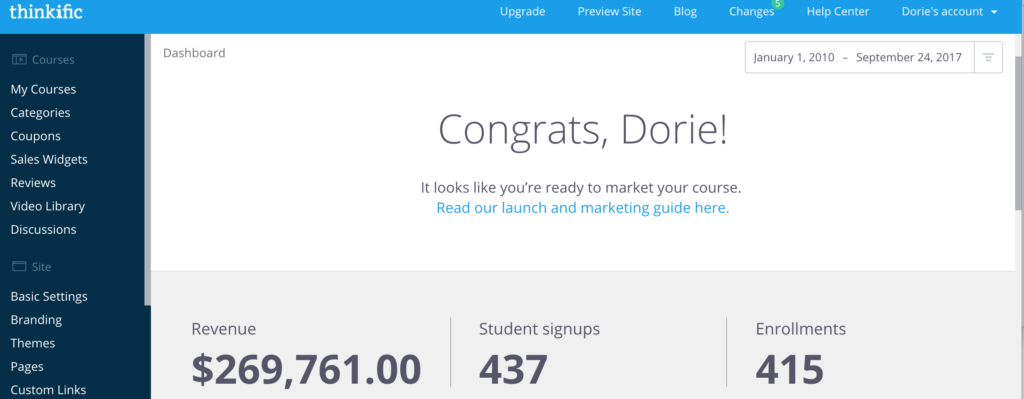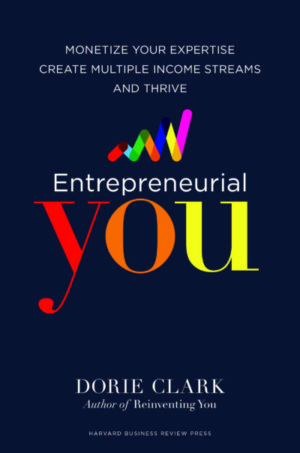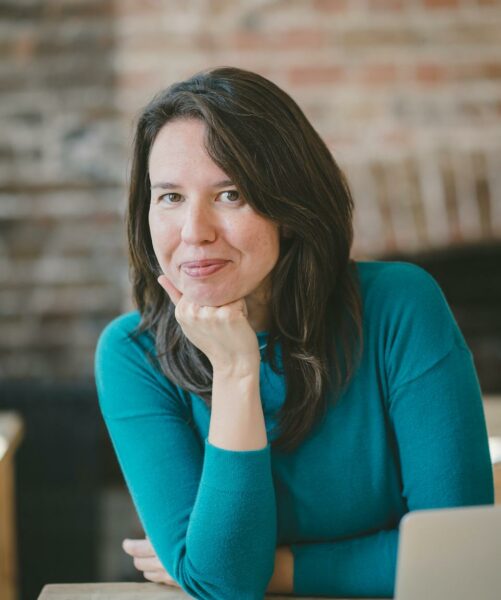I had two top goals for 2016 – 1) launch my first online course, and 2) research and write a book about how to create multiple income streams in your business. The book project, I figured, would give me the excuse to interview top entrepreneurs about their strategies for online course creation (and other income channels), and find out what’s worked and what hasn’t.
That book, Entrepreneurial You, has just been released by Harvard Business Review Press. It chronicles exactly what I learned and how regular professionals can apply those same principles to create new revenue streams for themselves.
As for me, as a direct result of implementing what I learned in the course of researching the book, I brought in nearly $270,000 in additional income over the past 18 months, including developing three online courses (such as this one on Rapid Content Creation) and holding multiple paid live events for course participants.

The toughest part, of course, is always figuring out how to get started. Below, I’ve included an adaptation from Entrepreneurial You about the very first steps I took to launch.
First, Survey Your Audience
For Entrepreneurial You, I interviewed Ryan Levesque, who runs high-level mastermind groups and came to prominence through developing his “Ask” methodology, which advocates surveying your customers before trying to sell them anything. So that’s what I did.
In December 2015, I sent an email to my list. The survey began with what Levesque says is the most critical question of all: “What’s your single biggest professional challenge right now?” That allows respondents to answer in any way they’d like, unbiased by your subsequent line of questioning.
You may have fixed ideas about their struggles, but this initial query allows you insight into what messaging and products will prove most salient for them. I then asked some basic demographic questions (age, gender, etc.) and asked them to rate which topics that I wrote about were most appealing to them.
The results were fascinating. First, developing a reputation as a recognized expert was the most popular topic among my readers. A full 20 percent of respondents identified that as their number-one interest among a set of options listed, five percentage points higher than any other topic. That was interesting evidence, but, Levesque warns, not sufficient.
What you’re looking for is not just overall sentiment; you’re looking to identify the topics that your most passionate fans want. The way to identify that passion, he says, is to quantify the length of their responses; the longer their answers, the more invested they are in the topic. Indeed, if you’re asking about their most pressing concern, it makes sense that the person who answers simply “hiring” or “burnout” is less invested than the person who takes the time to write a deep and thoughtful answer.
It took weeks to review and catalog the free-form answers, but the data was invaluable. I discovered there might indeed be enough interest for a course on becoming a recognized expert, but I wasn’t ready to launch even a pilot just yet. Instead, I reached out to fifty people who had indicated, per another of Levesque’s suggested questions, that they’d be willing to speak with me further.
I emailed a request: Would they be willing to look at a one-page description of a course I was thinking of offering and let me know what they thought of it?
I asked them whether they’d be interested in a course on how to become a recognized expert, what information would be most important to include in a course like that, and what they liked most and least in the course description I’d shared.
I also asked if they’d be interested in signing up for the course if it cost $500 and why or why not. Fifteen people responded, and five said yes. As entrepreneur Bryan Harris shared in a podcast interview with Pat Flynn, if you can get 10 percent of your respondents to agree to buy from you, that’s a strong indicator there’s sufficient demand for your product, so I finally felt confident enough to launch my pilot.
Next, Offer a Pilot
Nearly five months after surveying my audience, I sent out another email, this one titled, “A Chance to Work with Me—Special Pilot Offer.” In the text, I explained the specifics: I was opening up forty spots in a special pilot course on becoming a recognized expert that would consist of six live webinars over a five-week period.
We’d cover topics ranging from “Finding Your Breakthrough Idea” to “Building a Powerful Network.” In exchange for sharing frequent feedback about the course (and perhaps providing a testimonial afterward if they enjoyed it), participants would get more personal access to me and a much lower price: $500, instead of the $2,000 that the course would cost when it officially launched.
(You can download a free copy of the exact email I used to market my online pilot course here.)
 In the moment before you hit “send,” you can never be sure how your message will be received. I was astonished and thrilled that the pilot course sold out within 45 minutes.
In the moment before you hit “send,” you can never be sure how your message will be received. I was astonished and thrilled that the pilot course sold out within 45 minutes.
After wasting thousands of dollars in the past with half-baked ideas I hadn’t properly vetted, I had finally figured out how to identify what my audience truly wanted. In less than an hour, I earned $23,500.
That was only the start, and online course creation has subsequently become a major part of my business model.
To learn more about my course creation process, check out my previous Thinkific blog post, “How I Built a Six-Figure Online Course in Six Months,” and pick up a copy of my new book, Entrepreneurial You, which has an entire chapter on online course creation – plus an in-depth look at how to earn revenue from other channels, as well.
Dorie Clark is a marketing strategist and professional speaker who teaches at Duke University’s Fuqua School of Business. She is the author of Entrepreneurial You, Reinventing You and Stand Out. You can receive her free Entrepreneurial You self-assessment.






